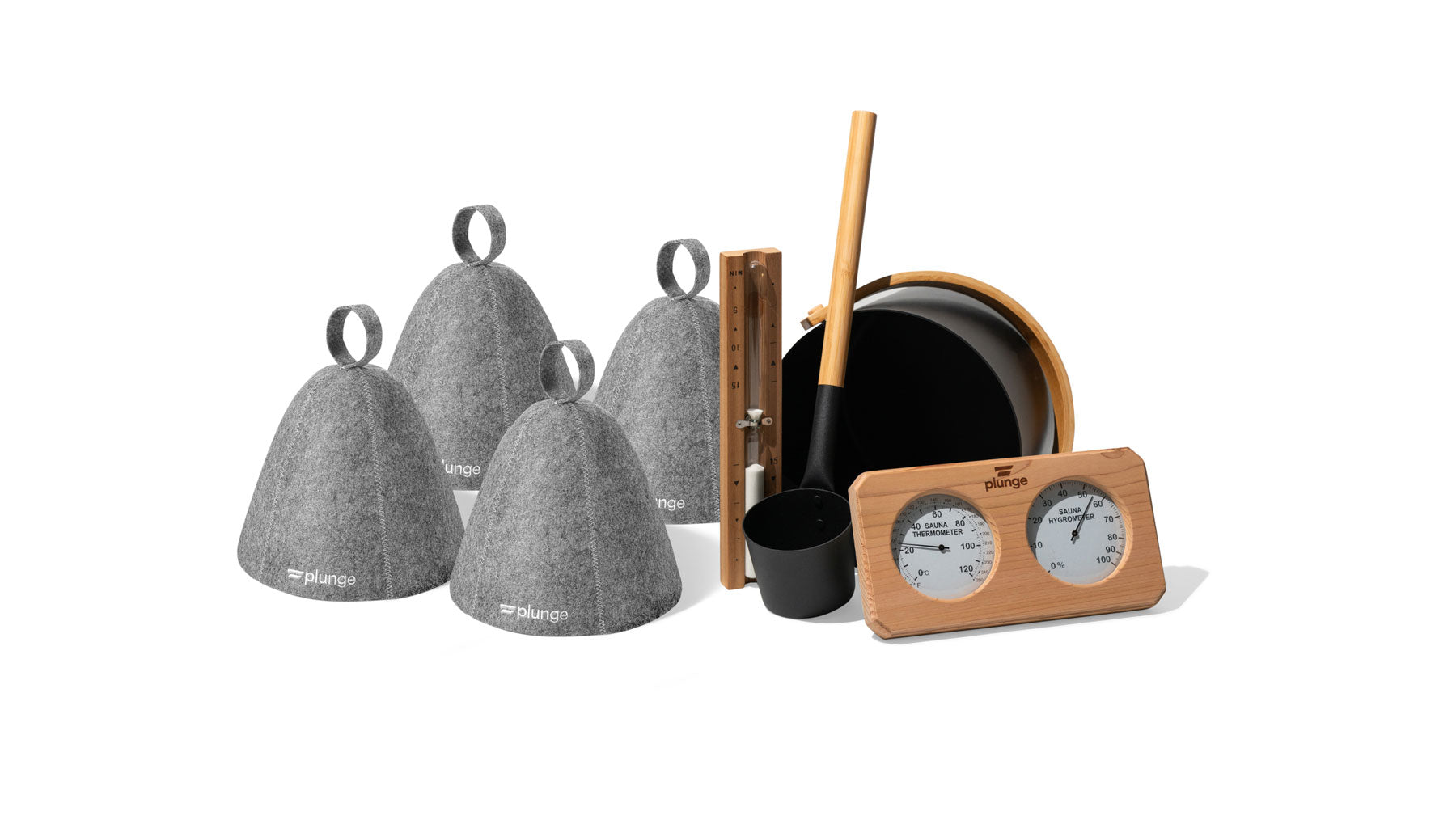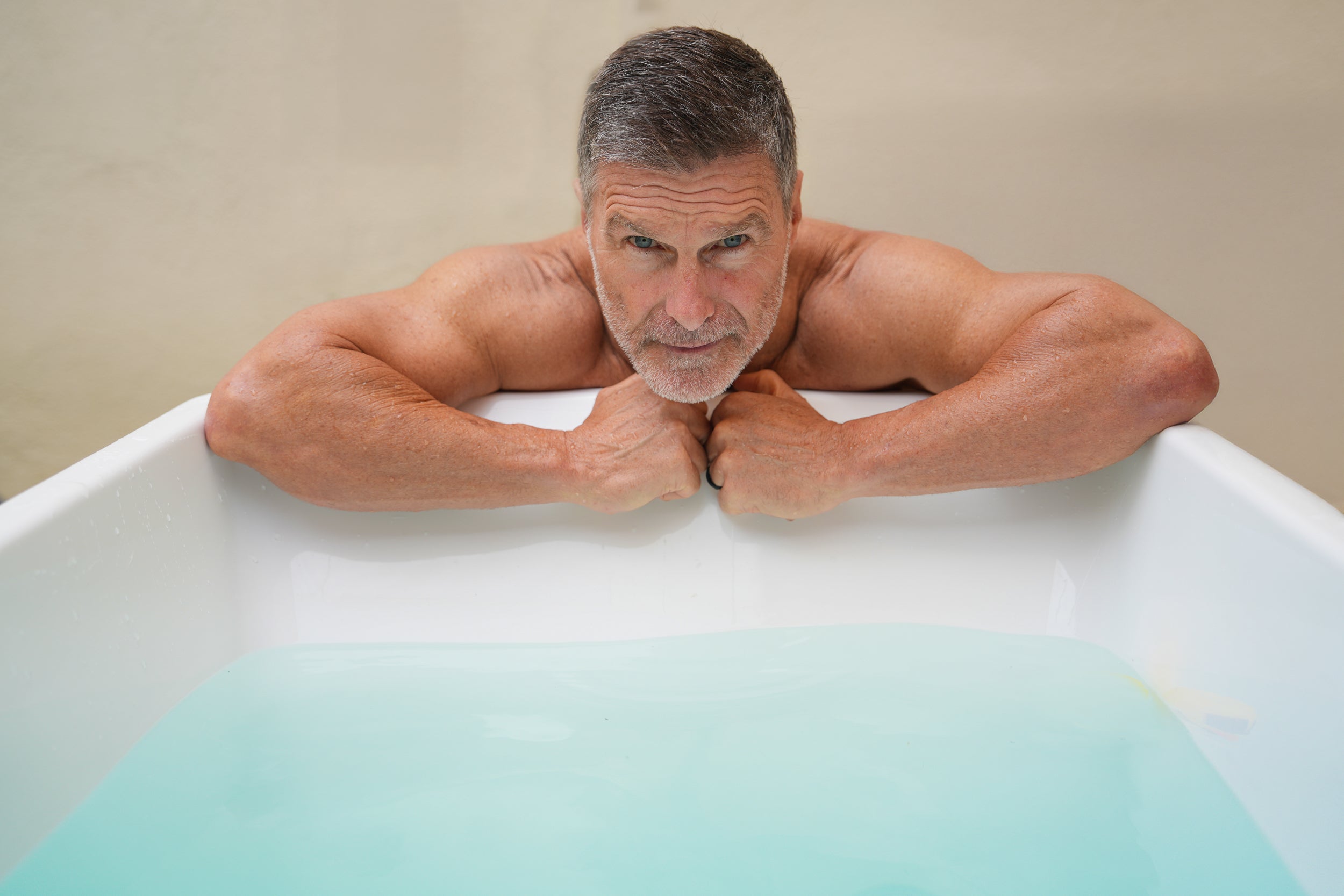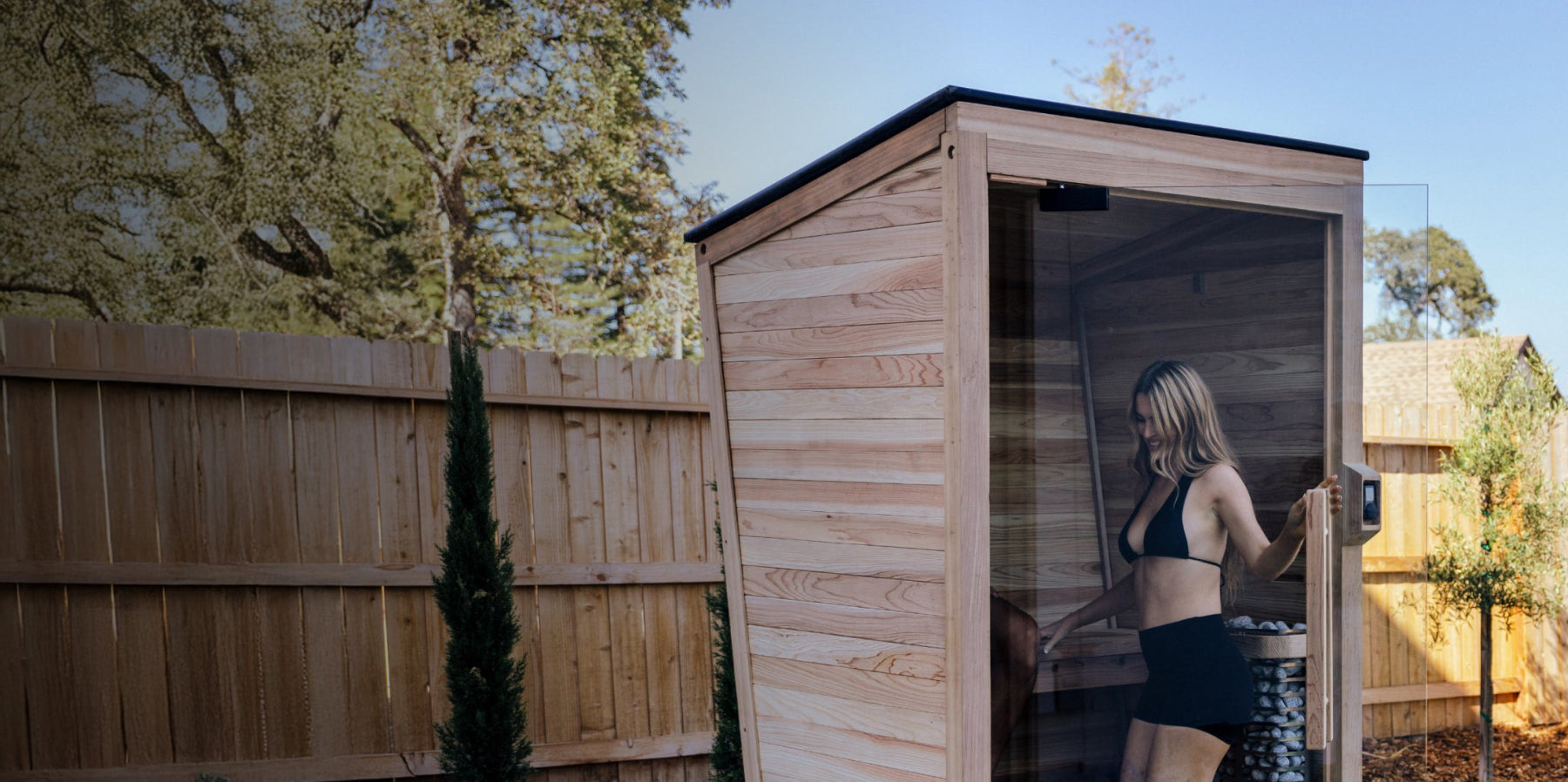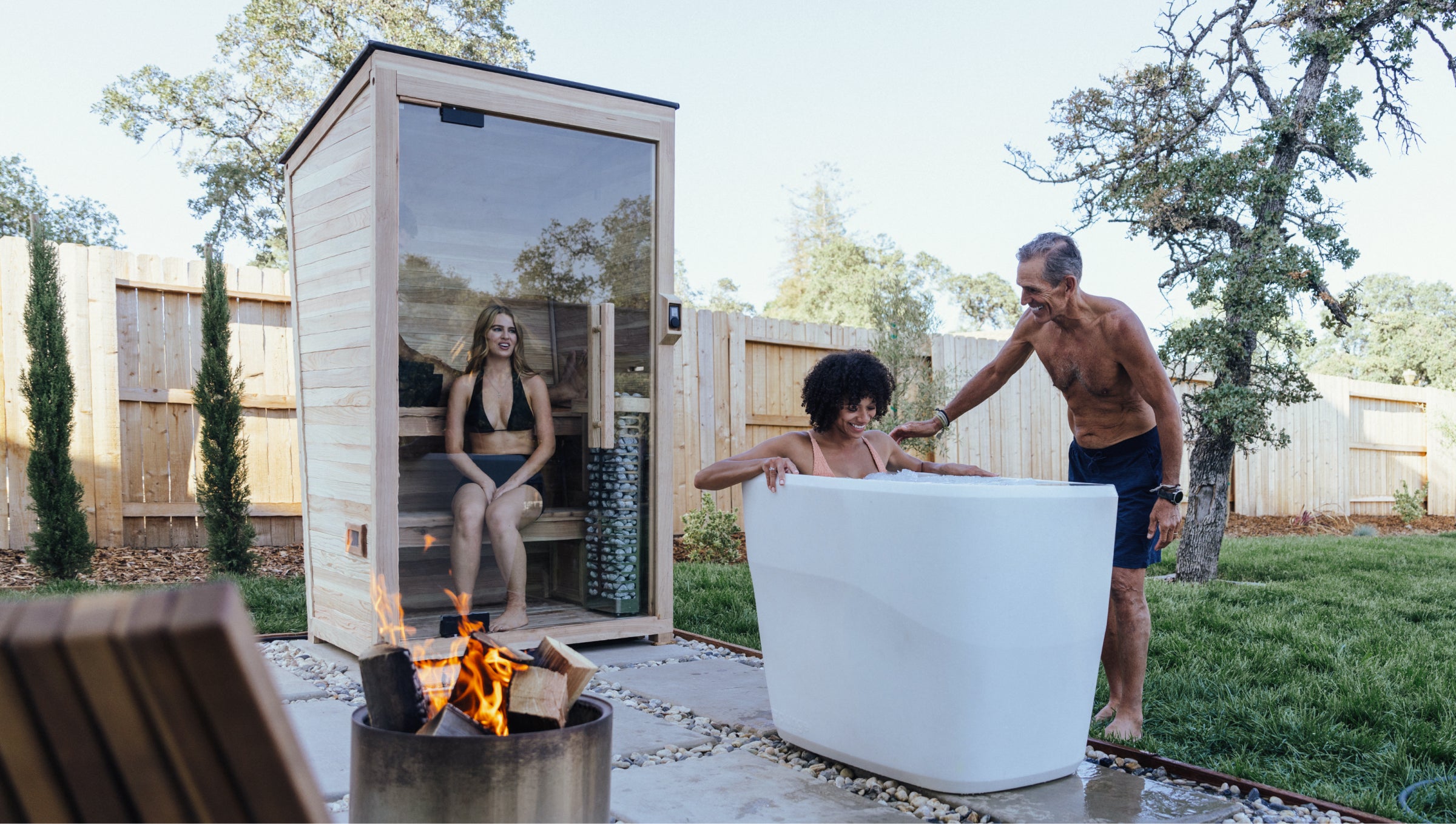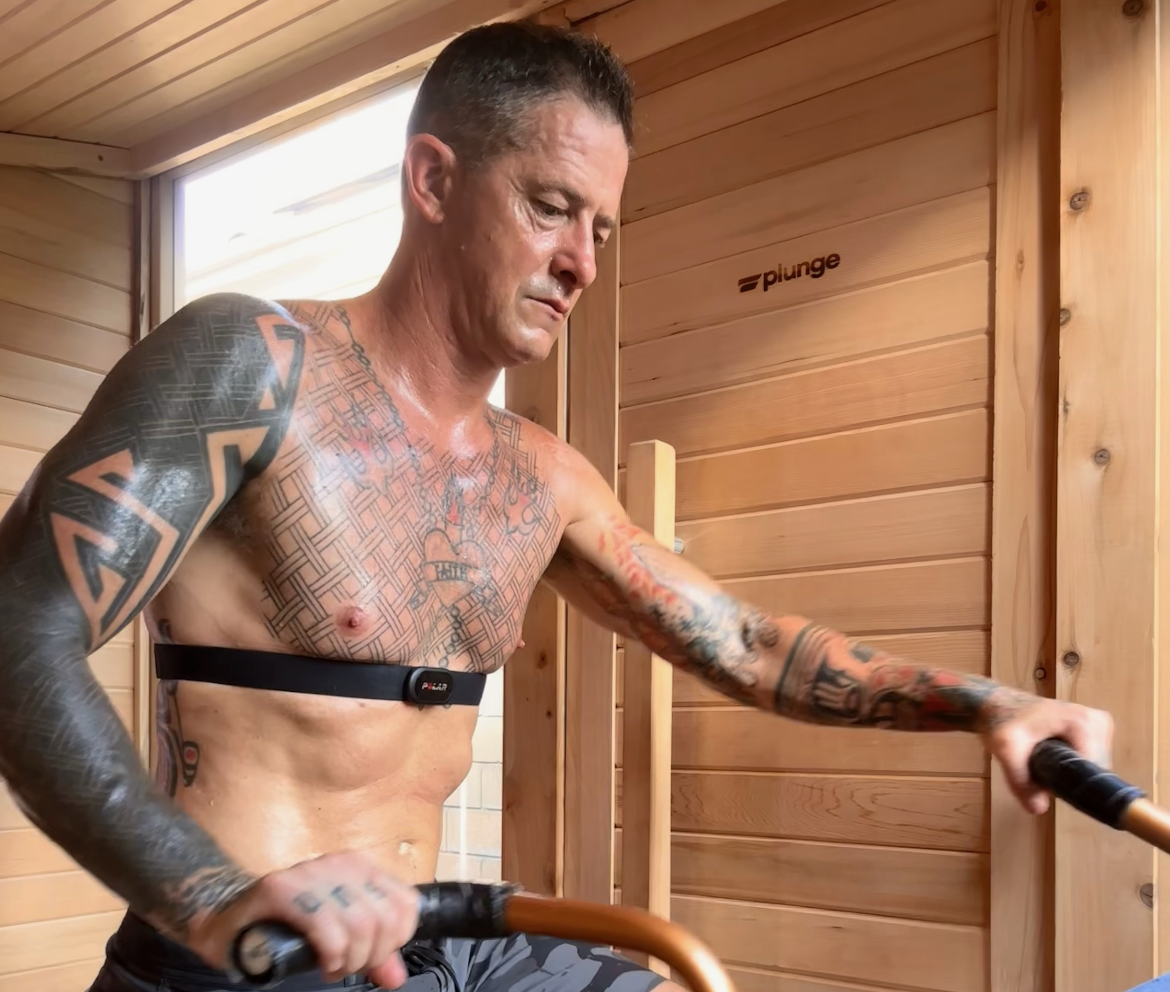
Sauna & Heat Training for Health & Performance
Brian Mackenzie is an innovator in human performance on stress adaptation and a pioneer in the development and application of custom protocols to optimize human health and performance. His work harnesses and integrates respiratory, movement, strength, conditioning and endurance-based training approaches to elicit unprecedented positive results.
This article should help you better understand how to maximize your use of saunas (heat) in your life. Many have become increasingly aware of the benefits of heat training with saunas over the last 5-10 years through much of the research and work that has accelerated in the last decade. Scientists, practitioners, and coaches have been looking at heat training or thermal loading (the correct term) for a long time. My first real thoughtful exposure to the heat was in the early 2000s while learning that running in the mountains or desert in California during the summer required something different: another physiological adaptation that I had not worked on. I converted my garage with three heaters and a treadmill into a large sauna and bought myself a personal seated sauna where my head stuck out. I learned a lot about this process in the early years, but most of all, I created a long-lasting healthy habit that has been with me for more than 20 years.
Depending on what you want to achieve, there are several ways to use heat training and manipulate it to make the best of it. Identify what you are doing it for. Is it for health or performance? These are two entirely different things in exercise and sport and exposure work like heat and cold training. Some days may be for health and “recovery.” Others may be for performance. It doesn’t matter; what does is how you’re approaching it.
Intro to Heat Training/Thermal Loading
The beginning stages of thermal loading (heat training) start with an increased sweat rate and stimulation of the hypothalamus, increasing autonomic nervous system (ANS) activity and, in particular, the sympathetic nervous system, which increases heart rate and blood pressure to manage the [stress] of the heat. You should feel immediate responses in blood pressure and heart rate when first introduced to heat, and when you reach your edges with heat training.
When we first respond to the heat our bodies increase blood plasma short term (this retards shortly after, but has an acute positive effect), which positively helps in how we are not only delivering but utilizing oxygen. Our immune systems also get a short-term boost from the acute exposure that raises our core temperatures, where we usually expect a fever to start. Sounds like exercise, right? That is because it is a lot like exercise, and during exercise (or at rest), we lose 80% of our energy to heat! This is why performance and heat enter the picture for many athletes.
You can expect short-term positive effects on blood pressure and resting heart rates similar to exercise because these are two first responders to heat training — not to mention the possibility of positive influence on cognition and the brain due to increased plasma and oxygen delivery that would immediately impact the brain.
Long-Term Effects
Long-term adaptations cover all of the short-term, but we now have the ability to use these benefits while not having to be in the heat as consistently. The short-term increase in blood plasma increases hemoglobin in the blood to help deliver more oxygen, which simultaneously means the percentage of red blood cells decreases automatically. In the long term, the body then makes more red blood cells to adjust for this, and you have effectively increased your body’s ability to cool itself faster and deliver more oxygen to be used in the body and the tissue. This is an eerily similar response to what happens at altitude as well, and in fact has crossover with altitude training. You may experience easier adaptability (not guaranteed) to adjusting to certain altitudes by being heat adapted because of much of this crossover.
In the long term, we also get an increase in heat shock proteins (HSP’s) responsible for protecting the cells from damage. HSP’s from heat have been found to affect the tissue and the anabolic signaling pathways, which in layman's terms means heat training can have hypertrophic (muscle growth) like effects on muscle tissue. Ironically some of the research done here is very similar to the performance protocol I lay out below.
So long as we maintain some of the exposure (2-3x per week) and, or we are consistently exercising at core body temperatures that work within our body’s adapted limits, we can maintain what research has shown to be a possible 6-8% increase in performance and many of the health benefits that come with heat training.
Levels of Thermal Loading
It is critically important to note that there are some severe dangers involved in heat training. Because this is most likely an athletic population, I won’t pretend you all like to take it easy and not do the extreme. Taking heat training to an extreme can have severe short-term and long-term side effects nobody wants. Take what we get in the positive above; it all goes into the negative. Increasing core temperatures beyond your body’s limits will do what most people in hospitals experience. You will undoubtedly compromise your immune system, to be frank.
So, getting in a sauna at 200+ degrees Fahrenheit and getting after it hard on your bike is not the brightest idea. You won’t last long and will probably limit your ability to raise your core temperature, thus accomplishing nothing. Second, pushing it beyond uncomfortable levels in the heat is called not listening to natural indicators, and it is one of culture’s biggest problems. You can make powerful gains if you are patient enough to listen and learn.
For Health: Beginners to Lifestyle
In terms of health, beginning a new sauna experience with heat is simple. Start at a temperature that allows you to get into the sauna without an urgency to want to get right back out. Much of the literature talks about 170 degrees Fahrenheit being the best heat. That’s wonderful. However, I’ve watched people walk right out at 160 degrees Fahrenheit because they were that uncomfortable.
Starting at a tolerable temperature will allow you to hit some of the necessary physiological switches for creating short- and longer-term adaptations. You will want to stay in the sauna until you’ve become uncomfortable (you might feel slightly claustrophobic, or this feeling has increased steadily), and you find a lot more noise in your head. I defer to clients and friends, getting uncomfortable as the marker. This can happen before someone sweats heavily in many cases. Thus, allowing for an excessive sympathetic drive, we can get the person to return for another time or after they begin to feel more comfortable.
In this beginning stage, you will want to repeat at least 2-3x per week for 2-3 weeks for more of the longer-term adaptations. In that time, your body will adjust to the heat, and you will find that you can either stay in longer or increase the starting temperatures to a higher point. If one were to follow this process, they would likely find themselves sitting in a sauna >170 degrees for at least 20 minutes within the next few months before they start to get uncomfortable. This is a huge change in how we tolerate heat and use energy.
One of the caveats with this sort of sauna bathing is that we rarely get our core temperatures up to a level (around 100 degrees Fahrenheit) to get the big benefits of all this exposure. This is also why you will hear about repeat or sauna and cold exposure together. So long as you don’t get in the cold for more than 30 seconds, you can maintain your core temperatures and cool the surface layers of skin and vasculature, giving you the ability to get in the sauna for another round. While many of you don’t have the time to do this daily, my suggestion is to take a weekend day and, while maintaining heat during the week as directed, have one day where you do 2-3 cycles in the sauna until uncomfortable, cool off or cold plunge <30-seconds, and repeat. This begins to touch the higher core temperatures associated with bigger adaptations to the heat and does not need to happen daily as long as heat is applied 2-3 more times per week. Consistency is king, and while it does not need to happen daily, no adaptation occurs without consistent reinforcement.
For Health and Performance: Intermediate to Advanced
Many of us who use saunas are more health-conscious than the general population. Most of you reading this also exercise or have a physical practice you are engaged in daily. This is one of the easiest ways to start getting some of the more advanced performance benefits of heat training that would otherwise not come just sitting in a sauna. It is highly advised that you adapt to heat from a health standpoint before engaging in the performance side. It will be much more difficult to take this approach and adapt to the heat before having some experience with sitting in the sauna for prolonged periods or higher temps. That said, this is an easy addition to maintaining the benefits of a health sauna practice while complementing your existing training program.
During exercise, our core temperature increases, and essentially (if the climate is warm enough, say above 70 degrees Fahrenheit), our body temperature becomes one of the main factors in how and why performance gets limited. I learned many years ago in getting ready for 120-degree+ temps that I could work out for, say, an hour, and then if I got into the sauna immediately following, I would jump out much sooner than I normally would had I not worked out. So I turned the temp down a bit (200 down to 170 degrees), and I’d get in after I worked out. I’ve measured much of this information I am sharing in understanding skin and core temps along with blood labs to understand much of the research and experiences I was having. Essentially, many of us who participate in the sauna are getting many of the short-term benefits. Still, from a long-term adaptation and performance standpoint, our core temperatures are not getting the exposure needed to benefit from the higher-end oxygen delivery and utilization aspects of adaptation I wrote about earlier. Again, as stated above, this is similar to altitude exposure.
The protocol is simple; it works like the last, except you will get in the sauna quickly after training. Set the temperature lower than you would normally go in, as you won’t be able to raise your core temperature if it is too hot. Our skin response will have us out before we can meet and continue to raise the core temperature if the sauna is set too hot. Start at a lower-than-normal temperature, increase the temperature as you adjust, or stay in longer. This is something I use with most private clients. As I stated above, it creates the biggest bang for our buck if the individual has made the earlier adaptations.
Heat for Performance: Advanced
* USE CAUTION!!! * (nobody wins anything for being the most heat-adapted. Take the time to adapt.)
If you have six days to spare per week for two weeks (rough adaptation phase) or are willing to spend a few days per week over many weeks, then this is how big heat training benefits can come pretty quickly. For best practices, start with the above protocols first to adjust to the heat for at least 1 month. For all of the protocols, particularly, this Performance Protocol, get yourself an accurate chest strap heart rate (HR) monitor. Heart rate responds to heat much like exercise (as stated above about the effects of heat training) and is a great way to gauge how to optimize one’s training inside the sauna.
You will want a bike that fits in your sauna or the ability to squat or do push-ups. Plunge has designed its sauna to perfectly match this and each of these protocols. I advise getting an older assault bike and parting ways with the computer, as it will most likely be worthless after certain heat thresholds are met. In either case, by using a bike or bodyweight exercises, we will start low and allow the heat to creep slowly up, finding our threshold heat well below any normal temperatures you can sit in. I start at about 140 degrees and reach as high as 170 for this protocol. So, I will set the temperature to 170 degrees but get in at or around 140 degrees as it is heating up. Because I use a bike, the fan on my bike keeps the temperature from rising quickly. The fan brings the cooler lower air (heat rises) up, and the heater works harder. If using bodyweight exercises, it is advised to set the temperature lower (150 to start) and then increase each session as much as you feel you can.
It is highly recommended that you start lower than I did in order to understand what you can handle. It's better to find out you can handle more, than overshooting it in the heat as your session will come to an end.
For the bike:
You will monitor your HR while maintaining the same effort for 45-60 minutes in the sauna. This is why I said start low! It is recommended to start somewhere between 60-120 watts roughly. I watch my HR go from the 80s at the start to the 130s at 45 minutes while maintaining the same work. What is also important to note is that comfort dictates everything, and your HR parameters can be very different, so use my targets as a trend for when you are no longer comfortable and where your HR is. Start slow and maintain over a long time (45-60 minutes), and ensure you do not get too uncomfortable. I will routinely open the door to lower temperatures or give myself a short break. I will also stop working sometimes, step out, and come back in as soon as I get comfortable again and finish the block of training.
For bodyweight exercises:
You will want to establish a cadence of work you can do every minute to three minutes. This will not only not fatigue you but allow you to tolerate the heat for up to 60 minutes. This, too, requires 45-60 minutes of sauna time and thus would also be a lower heat than you could tolerate in normal circumstances. Just like the bike, I suggest using a HR monitor and watching how it responds to the heat and when you are uncomfortable enough to get out (which should NOT be exceeded). I suggest starting at 140-150 degrees every 3 minutes and seeing how you respond after the first 15 minutes. The rep range should be something you are very capable of accomplishing. For example, 3-5 reps every 3 minutes is between 60 and 100 reps of an exercise. Higher-level athletes can do more reps, but again, if you are new to this, see what’s happening in 15 minutes, not in 3! You can either increase or decrease the temperature, increase or decrease the reps of the exercises, or increase or decrease the timing. The same principle applies to uncomfortability. It is king and dictates when you get out. Trying to mind-trick yourself like you are weak for wanting to get out is a recipe for going backward and doing severe damage.
I DO NOT advise doing this six days per week for over two weeks, as the benefits and adaptations will be set. Heat adaptation requires more time than cold adaptation. So, training blocks like this can be an advantage in boosting your performance and then maintaining that while simply diverting back to normal sauna bathing and normal training in general while repairing the rewards of a very cool performance enhancer.
*Important note: Again, heat is a great tool, but can be devastating if overdone. This is the easiest approach I’ve come to giving advice at a mass level, something I actually abhor as there is zero black and white when it comes to physiology. Use this with caution, and understand that this is a very individualized process which you can get a hint of by my use of “feeling uncomfortable”. This is a different place for everyone. Pay attention.
Resources
- Hannuksela, M. L. & Ellahham, S. Benefits and risks of sauna bathing. The American journal of Medicine. King, D. S., Costill, D. L., Fink, W. J., Hargreaves, M. & Fielding, R. A. Muscle metabolism during exercise in the heat in unacclimatized and acclimatized humans. J Appl Physiol.
- Lorenzo S, Halliwill JR, Sawka MN, Minson CT. Heat acclimation improves exercise performance. J Appl Physiol (1985). 2010 Oct;109(4):1140-7. DOI: 10.1152/japplphysiol.00495.2010. Epub 2010 Aug 19. PMID: 20724560; PMCID: PMC2963322.
- Ricardo J. S. Costa, M. J. C., Jonathan P. Moore & Neil P. Walsh. Heat acclimation responses of an ultra-endurance running group preparing for hot desert-based competition. European Journal of Sport Science Scoon, G. S., Hopkins, W. G., Mayhew, S. & Cotter, J. D. Effect of post-exercise sauna bathing on the endurance performance of competitive male runners. Journal of Science and Medicine in Sport/Sports Medicine Australia
- Selsby, J. T. et al. Intermittent hyperthermia enhances skeletal muscle regrowth and attenuates oxidative damage following reloading. J Appl Physiol (1985)
- Kokura, S. et al. Whole body hyperthermia improves obesity-induced insulin resistance in diabetic mice. International journal of hyperthermia: The Official Journal of European Society for Hyperthermic Oncology, North American Hyperthermia Group
- Kukkonen-Harjula, K. et al. Haemodynamic and hormonal responses to heat exposure in a Finnish sauna bath. European Journal of Applied Physiology and Occupational Physiology
- Baranauskas, Marissa N.; Constantini, Keren; Paris, Hunter L.; Wiggins, Chad C.; Schlader, Zachary J.; Chapman, Robert F.. Heat Versus Altitude Training for Endurance Performance at Sea Level. Exercise and Sport Sciences Reviews 49(1):p 50-58, January 2021. | DOI: 10.1249/JES.0000000000000238
- Maniam, J. & Morris, M. J. Voluntary exercise and palatable high-fat diet both improve behavioural profile and stress responses in male rats exposed to early life stress: role of hippocampus. Psychoneuroendocrinology
- Kirwan, J. P. et al. Substrate utilization in leg muscle of men after heat acclimation. J Appl Physiol (1985) 63, 31-35 (1987).
- Yamada, P. M., Amorim, F. T., Moseley, P., Robergs, R. & Schneider, S. M. Effect of heat acclimation on heat shock protein 72 and interleukin-10 in humans. J Appl Physiol (1985) 103, 1196-1204, DOI: 10.1152/japplphysiol.00242.2007 (2007).
- Stanley, J., Halliday, A., D’Auria, S. et al. Effect of sauna-based heat acclimation on plasma volume and heart rate variability. Eur J Appl Physiol 115, 785–794 (2015). https://doi.org/10.1007/s00421-014-3060-1
- Oberholzer L, Siebenmann C, Mikkelsen CJ, Junge N, Piil JF, Morris NB, Goetze JP, Meinild Lundby A-K, Nybo L and Lundby C (2019) Hematological Adaptations to Prolonged Heat Acclimation in Endurance-Trained Males. Front. Physiol. 10:1379. DOI: 10.3389/fphys.2019.01379
- The Effect of Heat Stress on Heat Shock Protein Expression and Hypertrophy Related Signaling in the Skeletal Muscle of Trained Individuals | American Journal of Physiology-Regulatory, Integrative and Comparative Physiology https://journals.physiology.org/doi/abs/10.1152/ajpregu.00031.2023







